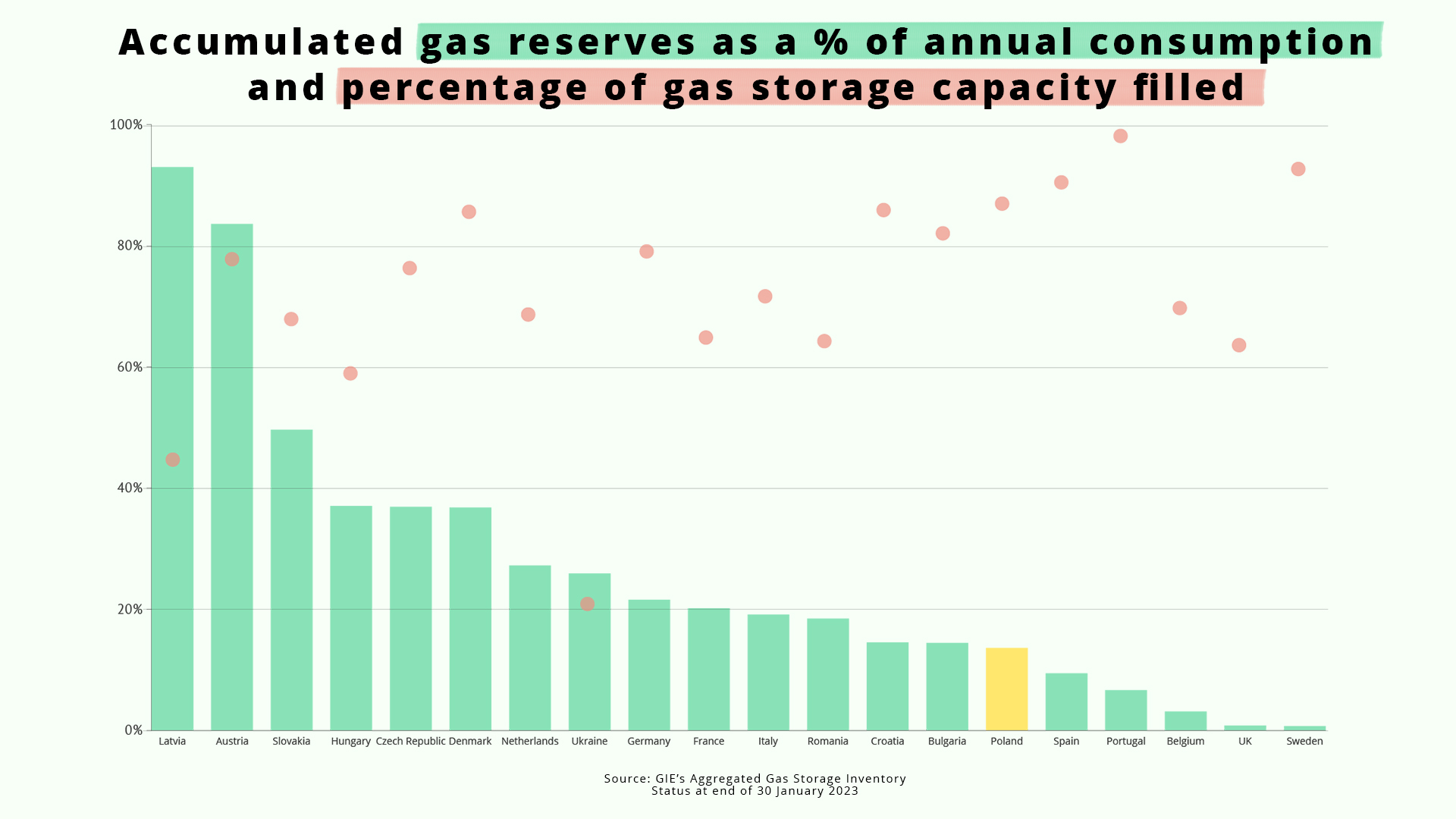While Poland has not faced a gas shortage this winter, that is largely thanks to relatively warm temperatures, says a senior official from the country’s energy regulator. She called for an increase in gas storage facilities but also for upgrades to the electricity grid to allow more supplies from renewable sources.
Poland’s gas storage facilities are currently just over 87% full, one of the highest levels in the European Union.
However, Poland has relatively little storage capacity compared to other countries. Its current accumulated reserves are sufficient to cover only 13.4% of annual consumption, one of the lowest levels in the EU.

“Unfortunately, we cannot be optimistic,” said Małgorzata Kozak, director of market development and consumer affairs at the Energy Regulatory Office (URE), speaking at an energy conference. She declared that Poland is “not completely gas secure”.
“What will determine the security of the state are storage facilities,” she continued. “We have too few of them. We need to pay attention to their expansion.”
“For the time being, we have gas, but this is weather-related: the warm winter saved us,” she added, also noting that Poland had managed to reduce demand for gas (by around 16-17% in 2022, according to climate ministry estimates).
Kozak noted that Poland has been investing in its gas infrastructure, including interconnectors with Lithuania and Slovakia, a recently opened pipeline bringing Norwegian gas, and plans to build a floating liquefied natural gas (LNG) terminal. “But this is still a bit low,” she added.
Kozak warned that the supply of LNG – which Poland imported in record quantities last year – cannot be increased exponentially and that countries such as China, India and Japan will compete with Europe for it.
While Poland has been increasing its renewable energy capacity significantly in recent years, Kozak noted that it is also necessary to develop the power grid, which currently is unable to handle the electricity produced at peak times.
Poland imported a record amount of liquefied natural gas in 2022, as it diversified away from Russian energy.
It received 4.4 million tonnes, 57% more than in 2021. That made LNG the country's main source of gas, meeting one third of national demand https://t.co/GRAFD5fsV5
— Notes from Poland 🇵🇱 (@notesfrompoland) January 4, 2023
Sometimes the grid operator orders renewable energy producers to reduce their production so as not to overload the grid. This is what happened, for example, on 31 December 2022, when Poland generated a new record 40% of its electricity from wind.
“Investment in renewable energy sources is not only about building installations, it is also about the huge costs of developing distribution systems and the transmission system,” she said.
“There are probably already thousands of requests to [my] office to resolve disputes over refusals to connect to the grid submitted by businesses who would like to invest in green energy,” said Kozak. “The most important thing from the point of view of the system is to unblock the grid.”
Poland generated 40% of its electricity from wind on 31 December, a new record.
The figure would have been higher had the grid operator not ordered wind farms to reduce output as the system was unable to use or store surplus energy being produced https://t.co/BJi5T2CuGs
— Notes from Poland 🇵🇱 (@notesfrompoland) January 6, 2023
Main photo credit: PGNiG (press materials)

Alicja Ptak is deputy editor-in-chief of Notes from Poland and a multimedia journalist. She has written for Clean Energy Wire and The Times, and she hosts her own podcast, The Warsaw Wire, on Poland’s economy and energy sector. She previously worked for Reuters.




















